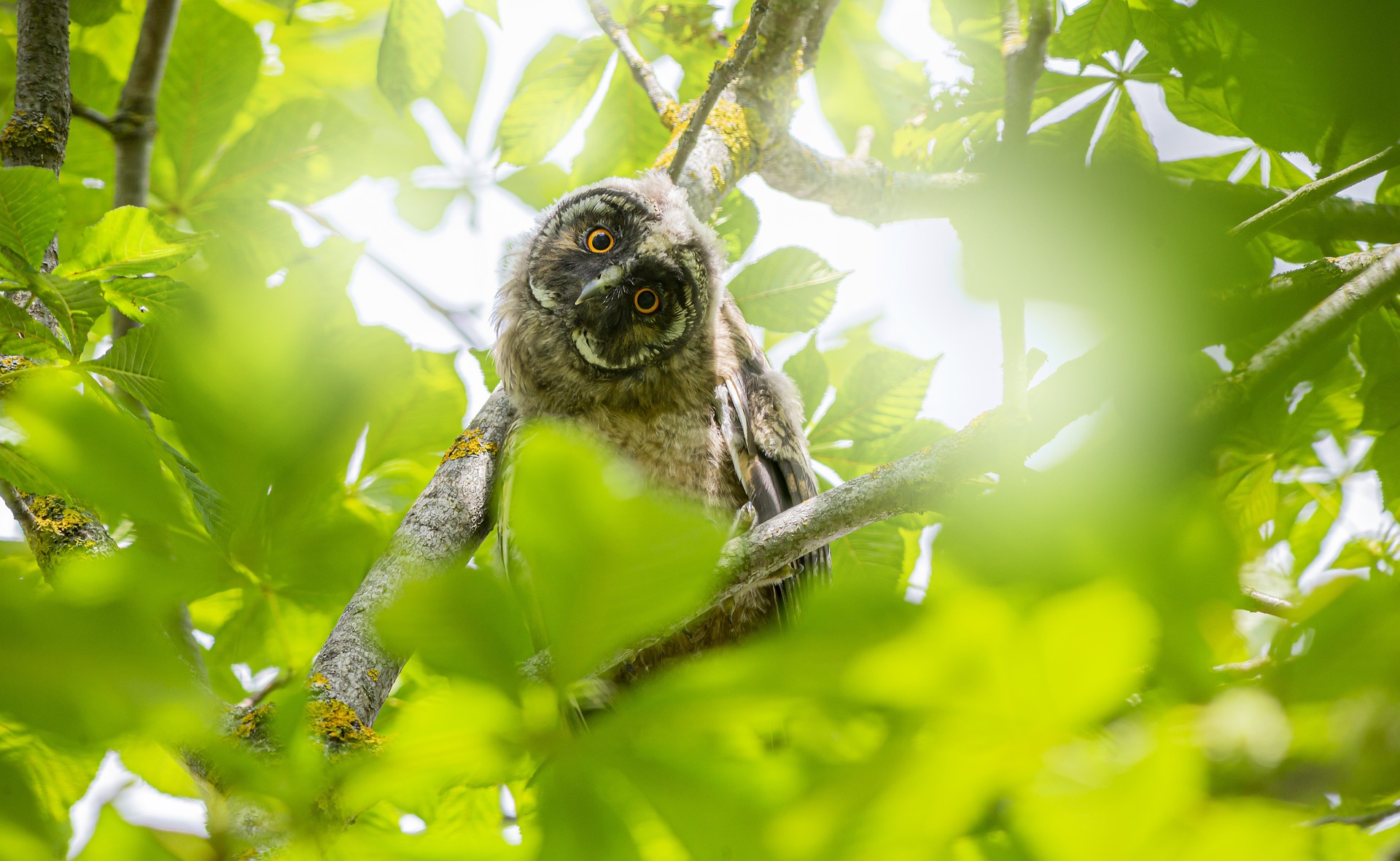🦉 Long-eared Owl (Asio otus)
The Long-eared Owl is a medium-sized, nocturnal owl known for its tall ear tufts, orange eyes, and remarkably cryptic plumage that helps it blend into woodland environments. It is one of the most widespread owls across the Northern Hemisphere and is admired for its stealthy hunting and haunting calls.
🔍 Identification
- Size:
- Length: 31–40 cm
- Wingspan: 86–100 cm
- Weight: 250–435 g
- Appearance:
- Facial disk: Pale with a distinct black vertical line between the eyes
- Ear tufts: Prominent and positioned near the center of the head (not actually ears)
- Eyes: Bright orange
- Plumage: Mottled brown, buff, and black with heavy streaking and barring—ideal for camouflage against tree bark
🌍 Distribution & Habitat
- Range:
- Found across Europe, Asia, North Africa, and North America
- Habitat:
- Prefers open woodlands, forest edges, shrublands, and farmlands with adjacent open areas for hunting
- Roosts in dense coniferous or mixed forests during the day, often communally in winter
🍽️ Diet & Hunting
- Primary diet:
- Small mammals, especially voles, mice, and shrews
- Occasionally small birds and insects
- Hunting behavior:
- Strictly nocturnal; uses silent flight and exceptional hearing to locate prey in darkness
- Hunts from low perches, swooping silently down to grab prey with sharp talons
🐣 Breeding
- Breeding season:
- Typically March to July in Europe and earlier in warmer regions
- Nesting:
- Does not build its own nest—uses abandoned crow or magpie nests, tree cavities, or platforms
- Clutch size:
- 3–8 eggs
- Incubated by the female while the male provides food
- Chicks:
- Hatch after ~25–30 days and fledge about 3 weeks later
🗣️ Calls
- The male’s song is a deep, monotonous “hoo… hoo… hoo…”, spaced several seconds apart—audible over long distances
- Alarm and contact calls include barks, screeches, and high-pitched whistles
🔎 Behavior
- Roosting:
- Very secretive, often roosting in dense cover
- In winter, may form roosting groups of up to 20 or more individuals
- Migration:
- Partially migratory—northern populations may move south in winter
- European populations are more sedentary
⚠️ Conservation Status
- IUCN Red List: Least Concern
- Threats:
- Habitat loss, especially due to the clearing of forests and loss of nesting sites
- Secondary poisoning from rodenticides
🧠 Fun Fact
Although called “Long-eared,” their ear tufts have nothing to do with hearing—they are used for camouflage and communication, making the owl appear larger and more threatening to predators or rivals.
📌 Summary
The Long-eared Owl (Asio otus) is a master of disguise and a silent, efficient predator of the night. Its haunting call and mysterious presence in woodlands make it a favorite among birdwatchers and a key part of forest ecosystems. With a wide distribution and adaptable habits, it remains one of the more elusive—but captivating—owls to encounter.
Views: 703
Subscribe to the newsletter:
